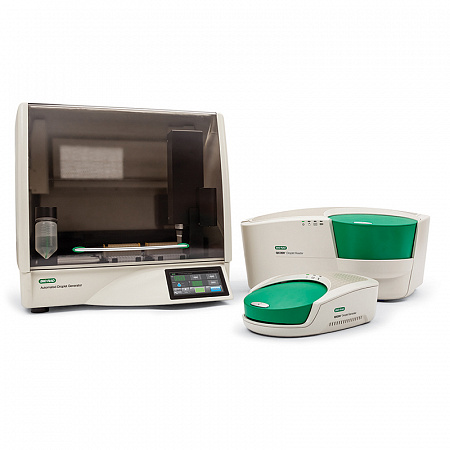It is used in studies of diagnostics of hereditary diseases, cancer, viral load, as well as for tasks of determining the presence of GMOs in extremely low concentrations and other applications where high accuracy and ease of measurements of genetic material is required.
Use:
- Quantification of cancer biomarkers. Mutations associated with oncology often fail to be detected due to their low concentration compared to the background wild-type DNA in the same sample. The high sensitivity of the QX200 system allows mutations to be detected and quantified at concentrations ranging from 0.0001% - one in one hundred thousand;
- Detection and assessment of pathogens. Accurately quantifying viral load is essential for determining disease status and developing, validating, and evaluating therapy. The QX200 is sensitive enough to detect ultra-small amounts of viral genetic material, even in complex mixtures;
- Gene copy number determination (CNV). Gene copy number variation is one of the main types of polymorphisms in the human genome. CNV has been associated with cancer, neurological and autoimmune diseases, and drug-related side effects. The QX200 allows you to determine CNV with a ratio accuracy of 1.2X, for example, five versus six;
- Validation and quantification of NGS libraries. Using digital PCR technologies, it is possible to qualitatively and quantitatively evaluate the created library for the most efficient use of sequencers;
- Gene expression analysis. Drop digital PCR allows quantitative determination of the level of gene expression: it is possible to estimate a minimum 10% change in expression, including at low concentrations;
- Testing products for GMOs. To the nearest thousandths of a percent, the QX200 system allows you to estimate the amount of genetically modified ingredients in food, raw materials and feed.
QX200 ™ System with manual loading of samples into the droplet generator
QX200 ™ AutoDG ™ System with automatic loading of samples into the droplet generator
Filling and loading of cartridges is carried out by the user; It takes about an hour to generate droplets for 96 samples.
Manual work is extremely simplified and minimized;
Eliminated user-to-user differences;
Generation of drops for 96 samples in 30 minutes;
HEPA filters to reduce the risk of contamination;
Touch screen with simple software.


